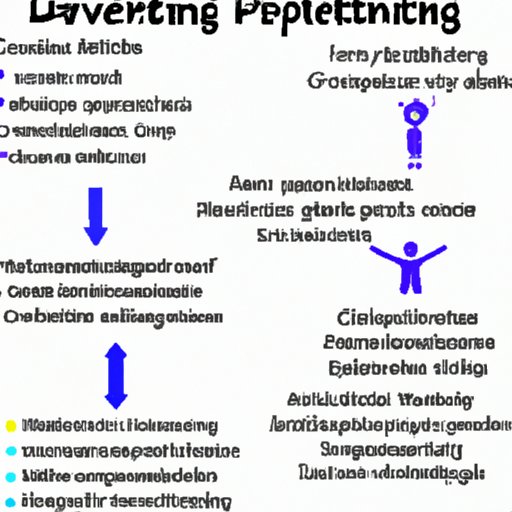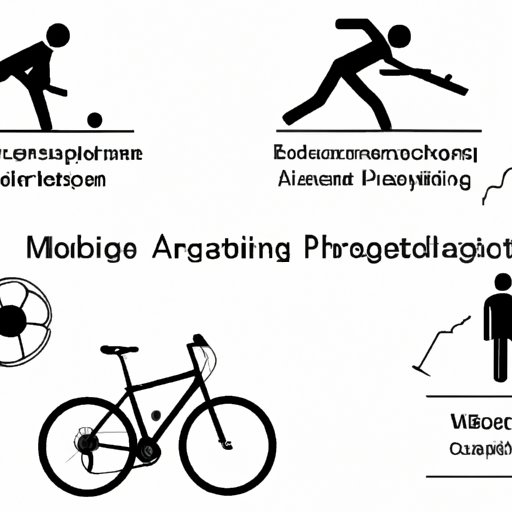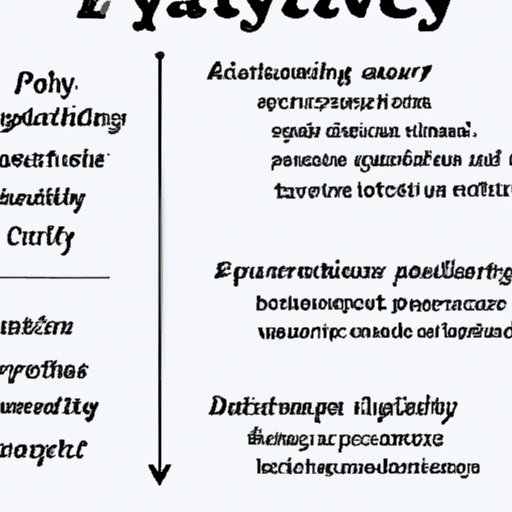Introduction
Physical activity is an important part of leading a healthy lifestyle. From improving physical health to enhancing mental and emotional wellbeing, the benefits of regular physical activity are vast. But what exactly is physical activity? What are its different forms? How can we measure it? This article will explore these questions and provide an in-depth guide to understanding physical activity.

Defining Physical Activity: An Overview
Physical activity is any type of bodily movement that increases energy expenditure. It includes activities such as walking, running, cycling, swimming, and strength training. As opposed to sedentary behavior, which is characterized by low energy expenditure, physical activity has the potential to improve overall health and wellbeing.
Physical activity can be further divided into two categories: aerobic activity, which is any activity that involves sustained and rhythmic movements, and muscle-strengthening activities, which are exercises that use resistance to build strength, endurance, and/or power. Flexibility and balance exercises, such as yoga and tai chi, can also be considered forms of physical activity.
What is Physical Activity? A Comprehensive Guide
In order to understand physical activity, it is important to consider its characteristics, how to measure it, and the guidelines for engaging in it.
Characteristics of Physical Activity
Physical activity is any type of bodily movement that requires energy expenditure. It can range from light activities, such as walking, to vigorous activities, such as running or playing sports. Generally speaking, physical activity can be divided into three categories: aerobic activity, muscle-strengthening activities, and flexibility and balance exercises.
Aerobic activity is any activity that involves sustained and rhythmic movements, such as walking, running, swimming, or biking. Aerobic activities increase heart rate and breathing rate, and can help improve cardiovascular health. Muscle-strengthening activities, such as weightlifting, push-ups, and sit-ups, use resistance to build strength, endurance, and/or power. Flexibility and balance exercises, such as yoga and tai chi, involve stretching and balancing movements to improve flexibility, coordination, and posture.
How to Measure Physical Activity
Physical activity can be measured in terms of intensity, duration, and frequency. Intensity refers to how hard a person is working during physical activity. Duration is the length of time spent doing the activity, while frequency is the number of times the activity is done in a given period of time. For example, if someone goes for a 30-minute walk five days a week, their intensity is low, duration is 30 minutes, and frequency is five days per week.
Guidelines for Physical Activity
The World Health Organization (WHO) recommends adults engage in at least 150 minutes of moderate-intensity or 75 minutes of vigorous-intensity aerobic physical activity each week, as well as muscle-strengthening activities on two or more days per week. The American College of Sports Medicine (ACSM) suggests adults do at least 30 minutes of moderate-intensity aerobic activity five days per week, as well as muscle-strengthening activities on two or more days per week. Additionally, the ACSM recommends adults do flexibility and balance exercises at least twice per week.

Understanding the Different Types of Physical Activity
It is important to have an understanding of the different types of physical activity in order to determine which type best suits an individual’s needs and goals. Below is an overview of the different types of physical activity.
Aerobic Activity
Aerobic activity is any activity that involves sustained and rhythmic movements, such as walking, running, swimming, and biking. This type of activity increases heart rate and breathing rate, and is beneficial for cardiovascular health. Examples of aerobic activities include jogging, dancing, swimming, and biking.
Strength Training
Strength training involves exercises that use resistance to build strength, endurance, and/or power. Examples of strength training activities include weightlifting, push-ups, and sit-ups. Strength training should be done two or more days per week, with rest days in between.
Flexibility and Balance Exercises
Flexibility and balance exercises involve stretching and balancing movements to improve flexibility, coordination, and posture. Examples of flexibility and balance exercises include yoga, tai chi, and Pilates. These exercises should be done at least twice per week.
Other Forms of Physical Activity
In addition to aerobic activity, strength training, and flexibility and balance exercises, there are other forms of physical activity that can be beneficial for health and wellbeing. Examples include gardening, housecleaning, and playing sports. These activities can be just as beneficial as structured exercise and should be incorporated into a regular physical activity routine.

Exploring the Benefits of Physical Activity
Regular physical activity can provide a wide range of physical, mental, and emotional benefits. Below are some of the most notable benefits of physical activity.
Physical Health Benefits
Regular physical activity can reduce the risk of chronic diseases, such as heart disease, stroke, diabetes, and certain types of cancer. It can also help maintain a healthy weight, reduce blood pressure, improve cholesterol levels, and strengthen bones and muscles.
Mental and Emotional Benefits
Physical activity can also have a positive impact on mental and emotional wellbeing. It can reduce stress, anxiety, and depression, as well as improve mood and self-esteem. Regular physical activity can also enhance concentration and focus, which can lead to improved academic performance.
Social Benefits
Physical activity can also have social benefits. Participating in physical activities with friends and family can help foster relationships and create meaningful connections. It can also provide opportunities for learning new skills, exploring new places, and experiencing new cultures.
How to Incorporate Physical Activity Into Your Life
Incorporating physical activity into your life can be challenging, but with the right approach, it can be done. Here are some tips for getting started.
Setting Goals
The first step to incorporating physical activity into your life is to set realistic goals. Consider your current level of physical activity and choose a goal that is achievable and sustainable. Start small and gradually increase your activity level over time.
Choosing an Appropriate Activity
Once you have set a goal, it is important to choose an appropriate activity. Whether it is walking, running, swimming, or strength training, make sure the activity fits your lifestyle and interests. If possible, find a friend or family member to join you in your physical activity so you can stay motivated.
Finding Motivation
Finding motivation to stay physically active can be difficult, but there are several strategies that can help. Setting short-term goals, keeping track of your progress, and rewarding yourself for meeting your goals can all be helpful. Additionally, listening to music or watching a movie while exercising can make physical activity more enjoyable.
The Impact of Physical Activity on Health and Well-Being
Physical activity has a profound impact on health and wellbeing. It can improve physical health, mental and emotional health, and social health. Below are some of the most notable impacts of physical activity on health and wellbeing.
Physical Health Impacts
Physical activity can reduce the risk of chronic diseases, such as heart disease, stroke, diabetes, and certain types of cancer. It can also help maintain a healthy weight, reduce blood pressure, improve cholesterol levels, and strengthen bones and muscles.
Mental and Emotional Health Impacts
Regular physical activity can help reduce stress, anxiety, and depression, as well as improve mood and self-esteem. It can also enhance concentration and focus, which can lead to improved academic performance.
Social Health Impacts
Physical activity can also have social benefits. Participating in physical activities with friends and family can help foster relationships and create meaningful connections. It can also provide opportunities for learning new skills, exploring new places, and experiencing new cultures.
Conclusion
Physical activity is any type of bodily movement that increases energy expenditure. From improving physical health to enhancing mental and emotional wellbeing, the benefits of regular physical activity are vast. This article provided an in-depth exploration of what physical activity is, its different types, the benefits it can offer, and how to incorporate it into your life. By understanding the different types of physical activity and following the guidelines for engaging in them, individuals can reap the many rewards of leading an active lifestyle.
(Note: Is this article not meeting your expectations? Do you have knowledge or insights to share? Unlock new opportunities and expand your reach by joining our authors team. Click Registration to join us and share your expertise with our readers.)
